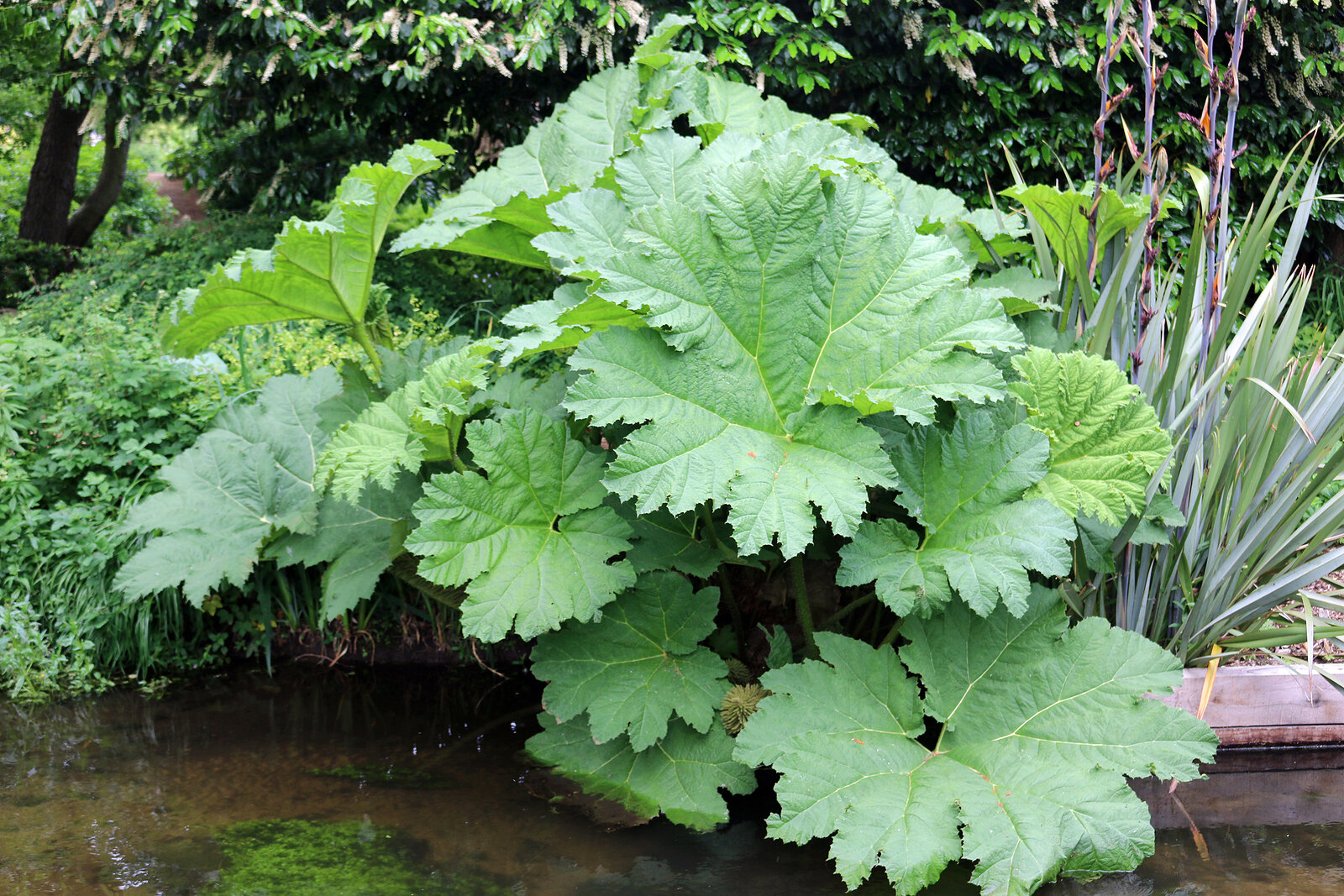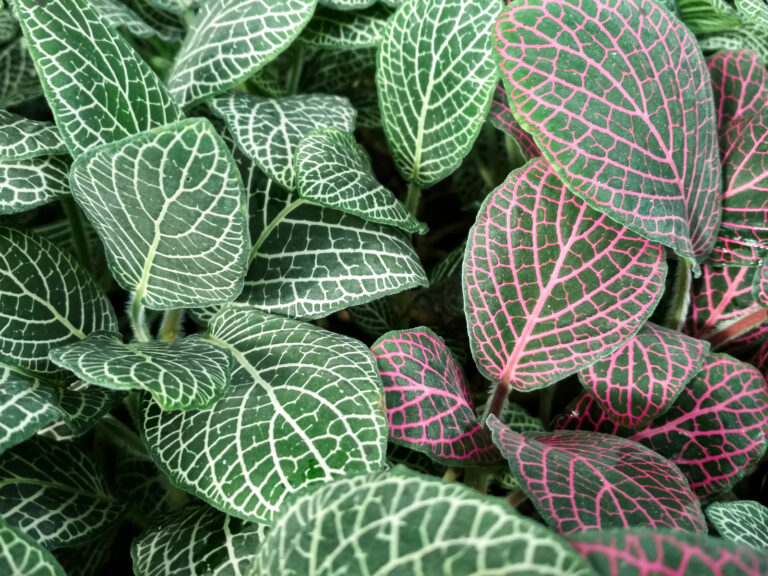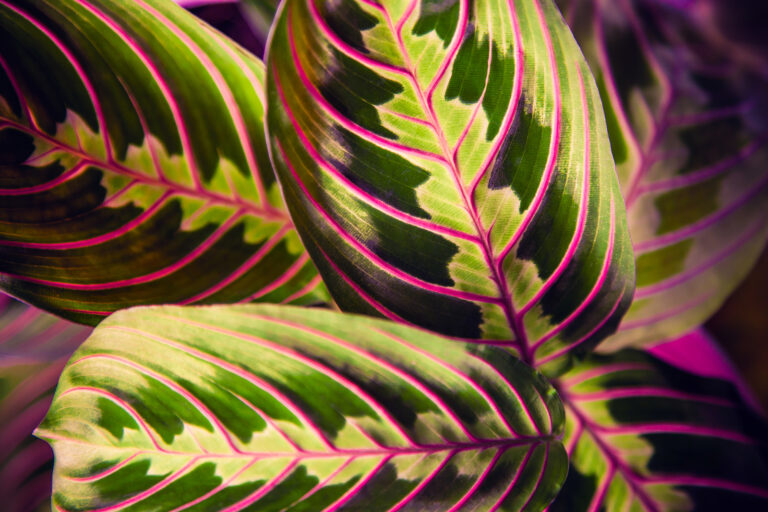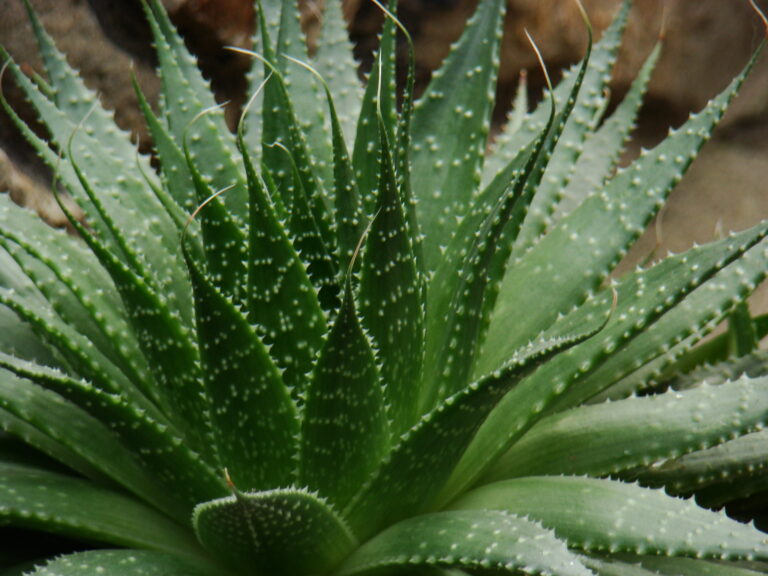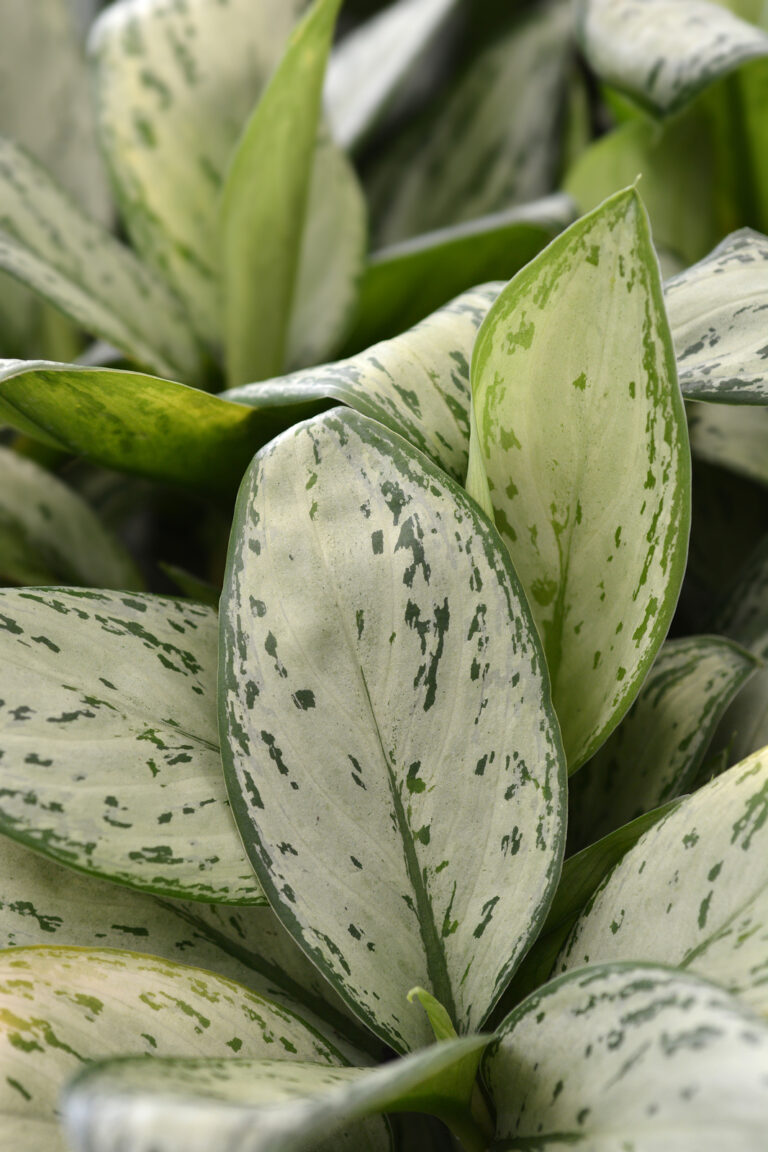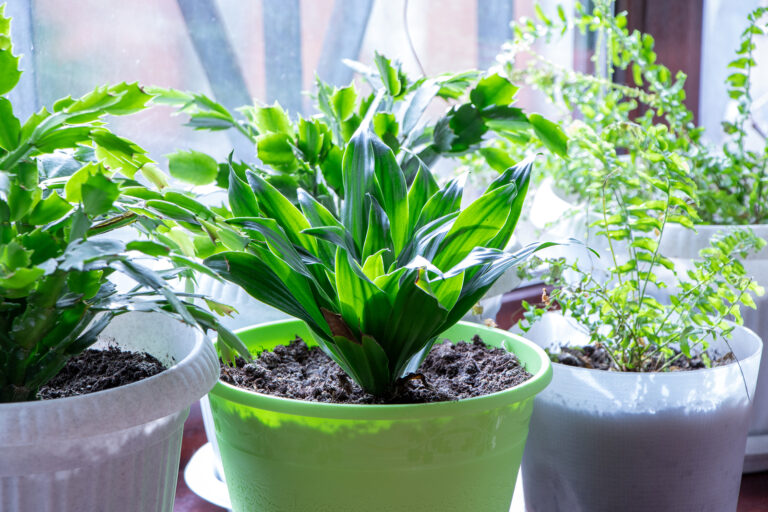How to Grow Gunnera
Gunnera is a herbaceous or evergreen perennial with massive ovate to heart-shaped lobed leaves. Gunnera can grow to 8 feet (2.4m) tall and giant leaves can be 4 to 8 feet (1.2-2.4m) across. New leaves emerge every spring in mild-winter regions, old leaves remain green for more than a year.
Gunnera grows from rhizomes and is clump-forming. Gunnera is best suited to regions with relatively cool summers, but not cold winters. In cold winter regions, leaves can die back completely in winter. It’s best to protect plant crowns with mulch in cold-winter regions.
Large species Gunnera is an excellent architectural plant. Plant them at the edge of ponds or streams or under the canopy of tall trees. Small species can be added to borders or rock gardens.
Gunnera is a genus of 45 species. It is native to moist areas of Southern Africa, Australasia, and South America.
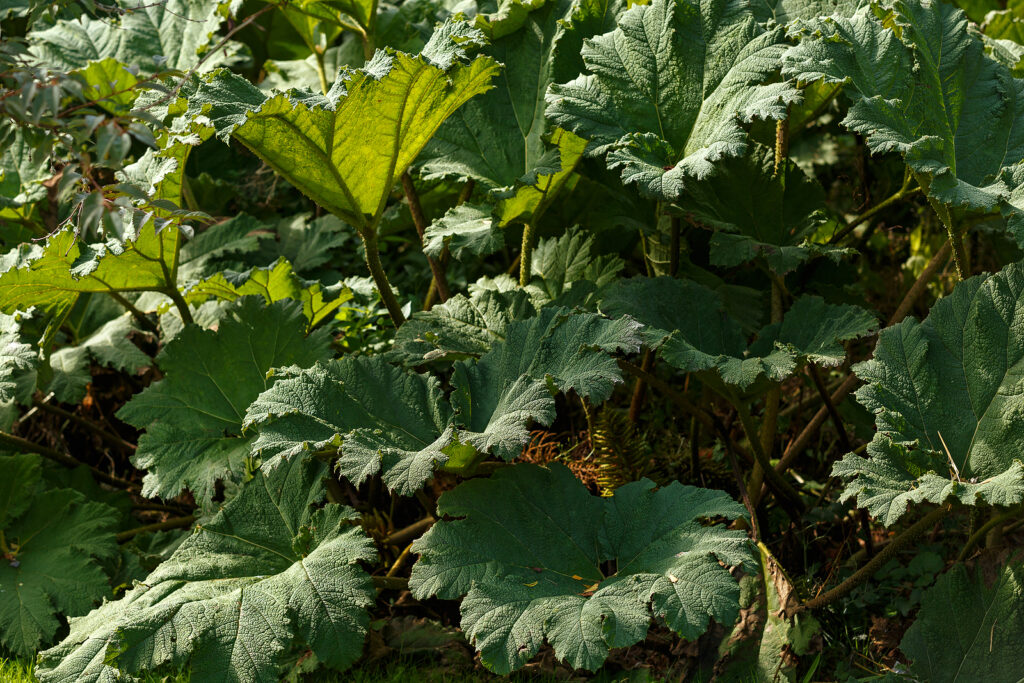
Get to know Gunnera
- Plant type: Evergreen perennials
- Growing zones and range: Zones 7 to 9; protect Gunnera from winter cold
- Hardiness: Hardy to Zone 7 or 8
- Height and width: To 8 feet (2m) tall and wide
- Growth rate:
- Form and habit: Vary from diminutive and mat-forming to extremely large and clump-forming
- Foliage: Massive to ovate, often heart-shaped, lobed, and usually toothed leaves, 4-6 feet (1-2m) long
- Flowers: Tiny, usually greenish yellow flowers are borne in dense, upright, brush-like spikes or panicles
- Fruits: Tiny fruits are red
- Bloom time: Spring and early summer
- Uses: Architectural plants, edge of pond, stream, or pool, bog garden, rock garden, an alpine house, or as groundcover
- Garden companions: Finer textured perennials, such as astilbe or Siberian iris
- Common name: Gunnera
- Botanical name: Gunnera
- Family name: Gunneraceae
- Origin: Southern Africa, Australasia, and South America
Where to plant Gunnera
- Plant Gunnera in full sun or partial shade; small species prefer partial shade.
- Plant Gunnera in deep, permanently moist, humus-rich soil.
- Shelter large Gunnera species from drying winds.
- Protect large Gunnera species in winter with a dry mulch.
- Most Gunnera are unsuitable for areas with high heat and humidity.
When to plant Gunnera
- Sow Gunnera seed in containers as soon as ripe, and keep cool but frost-free through the winter; germination is slow.
- Gunnera seed quickly loses viability.
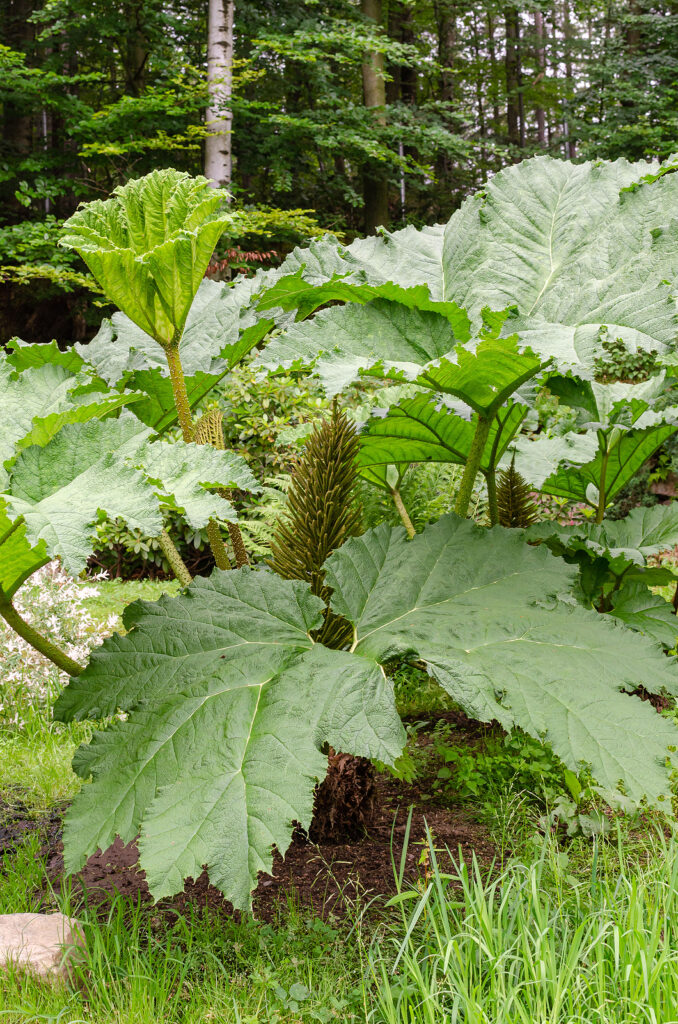
Planting and spacing Gunnera
- Plant Gunnera 8 feet (2.4m) apart.
How to water and feed Gunnera
- Keep Gunnera continuously moist; if not provided with adequate moisture, Gunnera leaves turn brown and dry up.
- Feed Gunnera with an all-purpose organic fertilizer two to three times.
How to care for Gunnera
- Large species need shelter from cold, drying winds.
- Small species prefer partial shade, but are best in full sun in cool to moderate summer regions.
Gunnera pests and diseases
- Gunnera are susceptible to attacks by slugs and snails.
Gunnera propagation
- Take cuttings from large Gunnera species in spring; divide small species in spring.
- Sow seed in containers as soon as they are ripe; grow on in a frost-free spot through winter.
Gunnera varieties to grow
- Gunnera magellanica, mat-forming herbaceous perennial with cupped, kidney-shaped, scalloped, dark green leaves, 2-3.5 inches (5-9cm) across, borne on upright stalks, 3-6 inches (8-15cm) long. In summer, bears compact panicles, .5-5 inches (1.5-13cm) long, of tiny green flowers, followed by ovoid to spherical, orange-red fruit, .25 inch (6mm) across. To 6 inches (15cm) tall and 12 inches (30cm) or more wide. Southern South America, Falkland Islands.
- G manicata, very large, clump-forming herbaceous perennial with rounded to kidney-shaped, palmately lobed, prominently veined, sharply toothed, deep green leaves, to 6 feet (2m) long, borne on prickly stalks, to 8 feet (2.5m) long. In early summer, branches 6 inches (15cm) long bear numerous tiny, greenish red flowers in conical, branched panicles, to 3 feet (1m) or more tall; these are followed by spherical, red-green fruit, to .13 inch (3mm) long. To 8 feet (2.5m) tall and 10-12 feet (3-4m) or more tall. Colombia to Brazil.

